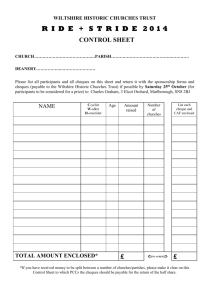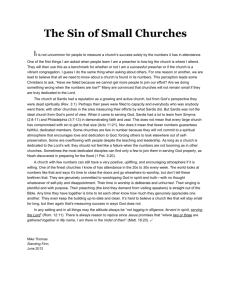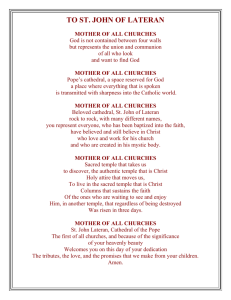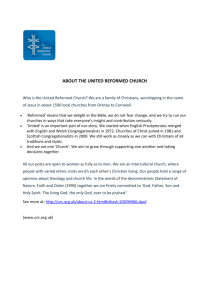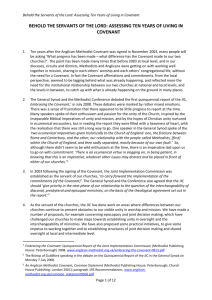Church-to-Church Partnerships - Utah Idaho Southern Baptist
advertisement
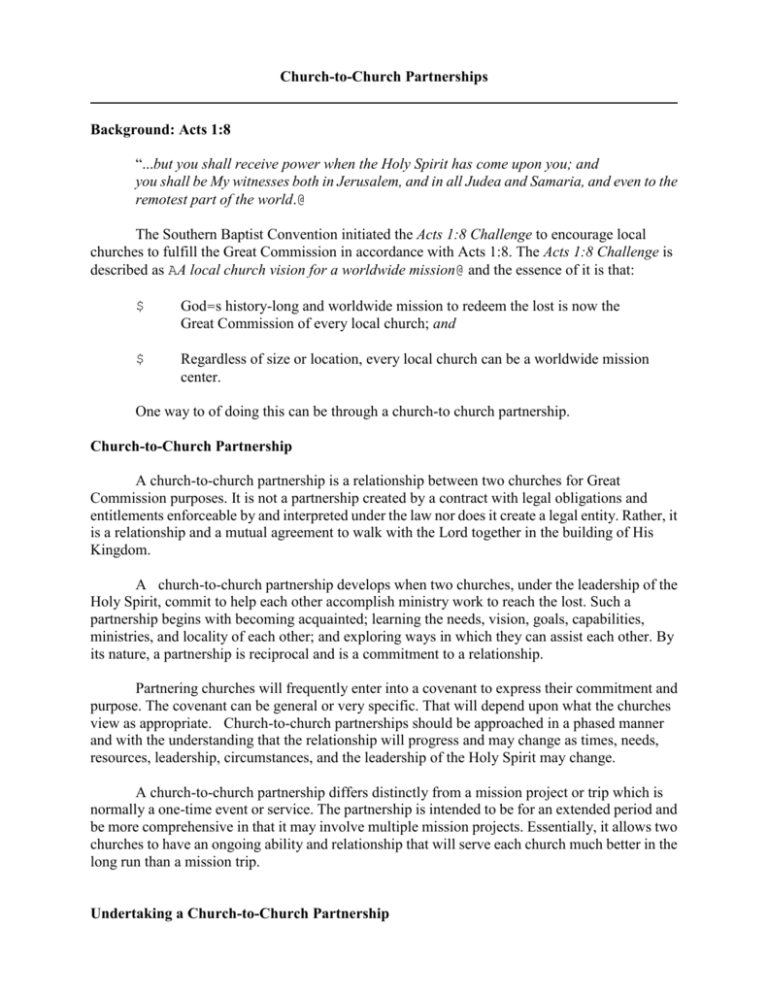
Church-to-Church Partnerships Background: Acts 1:8 “...but you shall receive power when the Holy Spirit has come upon you; and you shall be My witnesses both in Jerusalem, and in all Judea and Samaria, and even to the remotest part of the world.@ The Southern Baptist Convention initiated the Acts 1:8 Challenge to encourage local churches to fulfill the Great Commission in accordance with Acts 1:8. The Acts 1:8 Challenge is described as AA local church vision for a worldwide mission@ and the essence of it is that: $ God=s history-long and worldwide mission to redeem the lost is now the Great Commission of every local church; and $ Regardless of size or location, every local church can be a worldwide mission center. One way to of doing this can be through a church-to church partnership. Church-to-Church Partnership A church-to-church partnership is a relationship between two churches for Great Commission purposes. It is not a partnership created by a contract with legal obligations and entitlements enforceable by and interpreted under the law nor does it create a legal entity. Rather, it is a relationship and a mutual agreement to walk with the Lord together in the building of His Kingdom. A church-to-church partnership develops when two churches, under the leadership of the Holy Spirit, commit to help each other accomplish ministry work to reach the lost. Such a partnership begins with becoming acquainted; learning the needs, vision, goals, capabilities, ministries, and locality of each other; and exploring ways in which they can assist each other. By its nature, a partnership is reciprocal and is a commitment to a relationship. Partnering churches will frequently enter into a covenant to express their commitment and purpose. The covenant can be general or very specific. That will depend upon what the churches view as appropriate. Church-to-church partnerships should be approached in a phased manner and with the understanding that the relationship will progress and may change as times, needs, resources, leadership, circumstances, and the leadership of the Holy Spirit may change. A church-to-church partnership differs distinctly from a mission project or trip which is normally a one-time event or service. The partnership is intended to be for an extended period and be more comprehensive in that it may involve multiple mission projects. Essentially, it allows two churches to have an ongoing ability and relationship that will serve each church much better in the long run than a mission trip. Undertaking a Church-to-Church Partnership Normally, a church-to-church partnership is based upon the needs of one church and the abilities, resources, and willingness of the other church to assist. Yet, ultimately, the partnership is reciprocal in nature and benefits both churches and in that process can result in helping both churches to better reach the lost. The steps to undertaking a partnership may, at the discretion of the partnering churches, be somewhat as follows: a. b. c. d. e. f. Contact between the churches, e.g the pastor and missions teams Exchange of visits Discussions of needs, resources, and so forth Entering into a covenant, i.e. a covenant approved by each church Undertaking initial projects Holding joint events As an example, a church can develop a list of 5 needs in their order of priority. The proposed partner church can then review that list and determine what that church can do with respect to any or all of those needs. The two churches will then work together to undertake an initial project. From there, the churches will continue to communicate and plan further services such as Vacation Bible School, facility projects, prayer walking and other activities between them including the exchange of mission teams and speakers. Covenant As stated, a church-to-church partnership is not a contract but it does express a commitment to a relationship. The covenant should describe the understanding between the churches so that each has a clear perspective. Some suggested the matters to be included are: $ $ $ $ $ $ $ Duration (3-5 years) Objectives, purpose, and goals Expectations: prayer, joint participation, openness Responsibilities of each church Communications and procedures Scope Intent and method for evaluating the partnership 2

